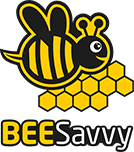Why Targeted Campaigns Matter in Social Media Marketing
In today’s digital world, social media has become a central pillar of marketing strategies. Yet, not all campaigns are created equal. Reaching the right audience with the right message is paramount to achieving real success. Simply putting out generic content or ads isn’t enough. The key lies in targeting the right people, at the right time, with tailored messaging that resonates with their unique preferences and behaviors.
Understanding the Importance of Reaching the Right Audience
Effective social media campaigns go beyond the concept of reach; they focus on the precision of that reach. If you are marketing to everyone, you might as well be marketing to no one. By honing in on your ideal audience, you ensure that your content speaks directly to those most likely to convert, whether that’s by making a purchase, signing up for a newsletter, or simply engaging with your content. A targeted campaign allows for more meaningful interactions and better results.
The Role of Personalization in Social Media Campaigns
Personalization in social media marketing has become more than just a buzzword. It’s a game-changer. Campaigns that leverage personalization can significantly increase engagement and drive better conversion rates. By customizing ads, offers, and messages based on user behavior, interests, and demographics, businesses can provide more relevant content that feels tailored and personal, fostering stronger connections with their audience.
Step 1: Defining Your Campaign Goals and Objectives
Setting Clear, Measurable Goals for Your Campaign
The first step in any campaign is setting clear, measurable goals. Without defined goals, you’re essentially shooting in the dark. Whether you’re aiming for brand awareness, lead generation, or sales, each objective requires a tailored strategy. Make sure your goals are specific, measurable, achievable, relevant, and time-bound (SMART). By defining clear goals, you create a roadmap for your campaign, helping you stay on track and measure success.
Aligning Campaign Objectives with Your Business Strategy
Every campaign should tie back to your broader business goals. Whether it’s increasing revenue, expanding your audience, or promoting a new product, your social media marketing should support the overall direction of your business. Ensuring that your campaign objectives align with your business strategy maximizes its effectiveness and helps contribute directly to the growth of your company.
The Importance of SMART Goals in Social Media Campaigns
SMART goals act as a guiding framework throughout your campaign. These goals help maintain focus and ensure that every action you take is aligned with your desired outcome. By setting specific, measurable, achievable, relevant, and time-bound goals, you create a sense of direction and accountability. This strategic clarity makes it easier to analyze results and determine what worked—and what didn’t.
Step 2: Identifying Your Target Audience
Building Audience Personas: Who Are You Talking To?
Creating audience personas is an essential step in the targeting process. These semi-fictional characters represent your ideal customers, based on real data and research. The more detailed your personas are, the better you can tailor your messaging. Consider their interests, challenges, motivations, and even the type of content they consume on social media. This deep dive into your audience’s world ensures that your content hits the mark.
Using Social Media Insights to Understand Audience Behavior
Social media platforms provide invaluable insights into user behavior. You can track what your followers like, share, comment on, and engage with. Using these analytics, you can adjust your content to cater to the preferences of your audience. The more you understand how your audience interacts with social media, the more effectively you can communicate with them and influence their actions.
How to Leverage Demographics, Interests, and Location for Targeting
Demographics, interests, and location are powerful targeting parameters on most social media platforms. By segmenting your audience based on these factors, you can create hyper-targeted campaigns that speak directly to specific groups. For instance, an outdoor apparel brand can target people interested in hiking or camping within a certain geographical area, creating a more relevant and compelling offer.
Step 3: Choosing the Right Social Media Platforms
Why Not All Social Media Platforms Are Created Equal
Not every social media platform is suited for every business. Each platform has its unique strengths and audience. For example, Instagram is ideal for visually driven brands, while LinkedIn is better suited for B2B marketing. Understanding where your target audience spends their time is key to choosing the right platform. Focusing your efforts on platforms where your audience is most active increases the likelihood of campaign success.
Which Platforms Are Best for Different Audiences?
Each platform caters to different demographics, so it’s crucial to align your campaign with the platform where your target audience spends the most time.
- Facebook: Broad audience, suitable for both B2B and B2C.
- Instagram: Popular among younger, visually-driven consumers.
- LinkedIn: Best for professionals, B2B marketing, and thought leadership.
- Twitter: Great for real-time updates and conversations.
- TikTok: Highly engaging for Gen Z and creative campaigns.
Exploring Platform-Specific Tools for Campaign Success
Each platform offers its own suite of marketing tools designed to boost campaign performance. These tools can help with ad creation, targeting, budgeting, and tracking. Understanding and leveraging these platform-specific features is crucial for maximizing your campaign’s effectiveness. For instance, Facebook’s advanced targeting and Instagram’s story ads can help your content stand out and drive conversions.
Step 4: Selecting the Best Social Media Marketing Tools
Overview of Popular Social Media Marketing Tools
Several tools can help streamline your social media campaigns, from scheduling and automation to analytics and reporting. Tools like Hootsuite, Buffer, and Sprout Social allow for efficient management across multiple platforms, saving time while maintaining consistency. There are also analytics tools such as Google Analytics and Sprout Social that provide insights into how your campaigns are performing, allowing you to make data-driven adjustments.
Features to Look for in a Social Media Marketing Tool
When choosing a social media marketing tool, look for features that align with your goals and campaign needs. Some key features to consider include:
- Scheduling & Automation: Plan and schedule posts in advance.
- Analytics & Reporting: Track campaign performance and engagement.
- Targeting & Segmentation: Help you hone in on your audience.
- Content Creation: Offer creative tools for images and videos.
- Collaboration: Allow team members to work together seamlessly.
Comparing Free vs. Paid Tools for Campaign Management
While there are several free tools available, paid tools often offer advanced features, better support, and more comprehensive analytics. The decision to use free or paid tools depends on your campaign’s scale and complexity. Small businesses may find free tools sufficient for their needs, but larger businesses or those with complex campaigns may need the more robust features provided by premium options.
Step 5: Crafting Your Message for Maximum Impact
Creating Compelling Content That Speaks to Your Audience
Your content is the heart of your campaign. To stand out in a crowded social media landscape, your message must be compelling, relevant, and authentic. Focus on addressing your audience’s pain points, offering solutions, and sparking curiosity. Whether it’s through a captivating headline or an insightful post, the key is to engage your audience from the first moment.
Using Visuals, Videos, and Infographics to Enhance Engagement
Visual content is more likely to be shared and remembered. Incorporate images, videos, and infographics to make your posts more engaging. Videos, in particular, are one of the most powerful forms of content, with high engagement rates across platforms like Facebook and Instagram. Infographics can simplify complex information and make it more digestible, increasing the likelihood of user interaction.
Tailoring Your Message for Each Platform and Audience Segment
Different platforms have different formats, and the same message may need to be adjusted accordingly. On Twitter, you might use shorter, punchy messages, while on Instagram, visuals are key. Tailor your content to fit the platform’s strengths, ensuring that your message resonates with each audience segment. Customization helps you maintain relevance and boosts engagement.
Step 6: Setting Up Targeting Parameters in Social Media Tools
How to Use Advanced Targeting Features in Social Media Tools
Advanced targeting features allow you to refine your audience even further. Social media platforms provide several options for targeting based on behavior, interests, device usage, and more. By leveraging these features, you can ensure your content reaches the most relevant users, increasing the chances of engagement and conversions.
Custom Audiences vs. Lookalike Audiences: What’s the Difference?
Custom audiences allow you to target people who have already interacted with your brand, such as website visitors or email subscribers. Lookalike audiences, on the other hand, help you reach new users who resemble your existing customers. Both have their advantages, but combining them effectively can expand your reach while maintaining relevance.
How to Retarget Your Audience for Better Conversions
Retargeting allows you to stay top-of-mind for users who have already shown interest in your brand. By showing them relevant ads or content again, you increase the chances of converting them into customers. Social media tools offer retargeting options based on website visits, app usage, and past interactions with your ads.
Step 7: Scheduling and Automating Your Campaigns
The Benefits of Scheduling Posts for Consistent Engagement
One of the biggest advantages of scheduling posts is consistency. By scheduling your content in advance, you ensure that your social media presence remains active without requiring constant manual updates. Consistent posting helps build trust with your audience and keeps them engaged over time.
How Automation Tools Save Time and Boost Productivity
Automation tools allow you to streamline the process of content posting, reporting, and audience engagement. These tools reduce the manual effort required, freeing up your time to focus on strategy and creative aspects of your campaigns. Tools like Buffer and Hootsuite allow you to schedule posts, monitor interactions, and generate reports with just a few clicks.
Best Practices for Timing Your Posts for Maximum Reach
Timing is crucial in social media marketing. Post when your audience is most active to ensure your content reaches the maximum number of people. Social media tools often provide analytics to help you determine the best times to post. Additionally, consider the frequency of your posts to avoid overwhelming your audience.
Step 8: Monitoring and Analyzing Campaign Performance
Tracking Key Metrics to Measure Campaign Success
Monitoring key metrics like engagement rate, click-through rate, conversion rate, and ROI will provide insights into how well your campaign is performing. Keep track of both qualitative and quantitative data to get a holistic view of your campaign’s effectiveness.
How to Interpret Social Media Analytics for Insights
Social media platforms offer robust analytics tools that can help you track how your content is performing. However, understanding the numbers is just as important as collecting them. Digging into analytics allows you to understand what resonates with your audience, enabling you to optimize future content.
Adjusting Your Campaign Strategy Based on Real-Time Data
Real-time data allows you to adjust your campaign on the fly. If you notice certain posts performing better than others, tweak your strategy accordingly. Real-time monitoring ensures that you’re not just waiting for the campaign to end to make adjustments, but instead making proactive changes as needed.
Step 9: Testing and Optimizing Your Campaigns for Better Results
Running A/B Tests to Improve Ad Performance
A/B testing is a powerful way to improve your campaigns. By testing different versions of your ads—whether it’s a headline, image, or call to action—you can determine which one performs better. This data-driven approach helps optimize your ad spend and increase your overall ROI.
Analyzing Data to Make Data-Driven Decisions
Once you’ve gathered data from your campaigns, use it to make informed decisions about future strategies. Analyzing this data allows you to optimize your approach, refine your audience targeting, and improve your content. Data-driven decisions lead to better results and higher efficiency.
Continuous Improvement: Refining Your Strategy Over Time
Social media marketing isn’t static. It requires constant adjustment and optimization. By analyzing results and refining your strategy, you can continuously improve your campaigns and ensure long-term success. Regularly revisiting your tactics allows you to stay ahead of trends and maintain engagement.
Step 10: Engaging with Your Audience Throughout the Campaign
Why Social Media Engagement Is Key to Campaign Success
Engagement is the backbone of any successful social media campaign. By interacting with your audience—whether it’s responding to comments, liking posts, or answering questions—you build stronger connections. Engaged audiences are more likely to share content, advocate for your brand, and convert into loyal customers.
Responding to Comments, Messages, and Mentions Effectively
Timely responses to comments, messages, and mentions show your audience that you value their input. Engagement doesn’t stop once the post is live—it’s an ongoing conversation. Responding quickly and authentically strengthens relationships and encourages further interaction.
Building Relationships Through Authentic Interactions
Authenticity is key in social media interactions. People are more likely to engage with brands that feel genuine. Foster relationships with your audience by being transparent, listening to their feedback, and offering value in your interactions.
Achieving Success with Targeted Social Media Campaigns
Recap of the Key Steps in Creating a Targeted Campaign
To create successful targeted campaigns, you must define clear goals, identify your audience, choose the right platforms, craft compelling content, and continuously analyze and optimize your efforts. The key to success lies in strategic planning and personalized messaging.
Encouraging Continuous Learning and Adaptation in Social Media Marketing
Social media marketing is constantly evolving, and staying ahead of the curve requires continuous learning. Be open to experimentation and adapting your strategies to emerging trends.
Final Tips for Maintaining a Long-Term Social Media Strategy
To maintain success in the long run, focus on building authentic relationships with your audience, staying consistent with your messaging, and continually optimizing your campaigns. Social media marketing is a marathon, not a sprint, and the key to long-term success is staying engaged and adaptable.
At Beesavvy, we understand the importance of an adaptive and dynamic social media strategy. If you’re looking to elevate your social media marketing efforts, Contact Us today to see how we can help you create a sustainable and successful strategy tailored to your business needs!



